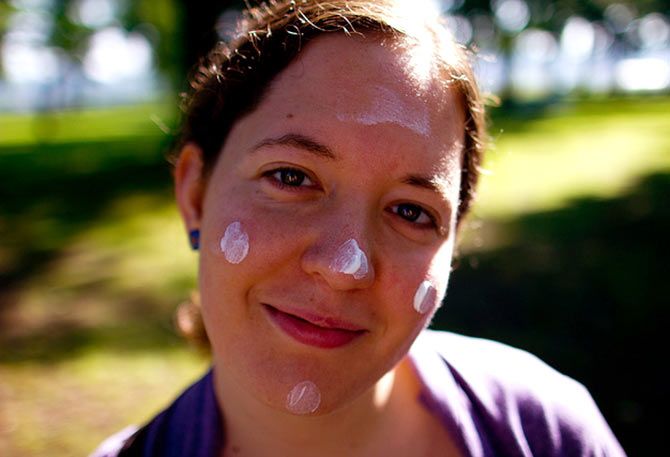Sunscreen is one of the most common methods of protecting your skin from the sun's harsh rays, while getting a gorgeous glow.

As per leading Indian herbal beauty expert Shahnaz Husain, "Exposure to the sun leads to sun tan, sun burn and many other effects. Apart from tanning, the skin is exposed to harmful ultraviolet rays of the sun, which has several long-term effects, like early formation of lines and wrinkles on the skin. Sun-exposure can also lead to dark spots or patches."
She says that the skin must be protected with a broad-spectrum sunscreen, which provides protection from both UV-A and UV-B rays of the sun.
What are UV rays?
Husain notes, "The sun gives off ultraviolet rays. We divide them into categories based on the wavelength. There are UV-A, UV- B and UV-C rays. Of these, UVC rays are almost completely absorbed by the ozone layer and do not affect the skin. UVB affects the outer layer of skin and is mainly responsible for sunburns. It is the most intense between the hours of 10:00 am and 2:00 pm when the sunlight is brightest. UVA rays were once thought to have a minor effect on skin damage, but now studies are showing that UVA is a major contributor to skin damage."
She added, "Sun exposure can also cause loss of moisture from the skin. However, most sunscreens have built-in moisturisers. So, it is not necessary to apply both moisturiser and sunscreen, unless the skin is very dry."
So what is the answer? Husain says, "At the moment, physical protection is the answer. This can be done by applying a broad-spectrum sunscreen. A sunscreen is a product which forms a protective cover between the skin and the sun's rays, while a broad-spectrum sunscreen is one which provides protection from both UV-A and UV-B rays of the sun. Both UVA and UVB radiation can cause skin damage, including premature ageing signs. There are many other effects. As already mentioned, sunscreens help to protect the skin from UV rays."
The best way to apply it
The herbal queen of India notes, "It is essential to apply sunscreen, not only on the face, but also on all exposed areas. The back of the neck and arms are extremely vulnerable to sun damage too. The sunscreen should be applied about 20 minutes before sun-exposure. If you happen to be in the sun for more than an hour, you should re-apply the sunscreen. A sunscreen with SPF 15 to 20 is adequate for most skins, but if the skin is more sensitive and tends to burn easily, one should use a sunscreen with a higher SPF of 30 or 40. Avoid rubbing the sunscreen into the skin. It is better to pat it on."
Husain advises to apply sunscreen while swimming, holidaying by the sea or in the hills.
Reflective surfaces, like water and snow actually increase the effects of UV rays.
Sunscreens by skin type
The beauty expert says, "For oily skin, look for an "oil-free" product, or apply a sunscreen lotion, rather than a sunscreen cream. Add a drop of water to it, to provide a lighter coverage. If the skin is very dry, apply a sunscreen cream. Or, you can apply a moisturising cream first. Wait for a few minutes and then apply the sunscreen.
Lead image used for representational purposes only. Image: Michael/Creative Commons










